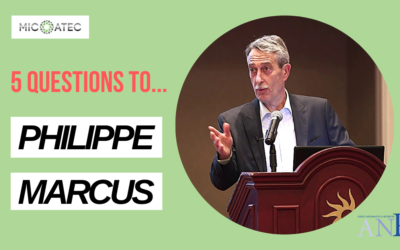Meeting with Chavie NKOUA, doctoral student working on the MICOATEC project.
1/ Can you introduce yourself in a few words?
Hello, I am Chavie NKOUA, I am 26 years old and I am from Congo Brazzaville. I arrived in Toulouse for my university studies. Last year I graduated with a Masters in Materials Science and Engineering. During this year of Master, I did an internship at MECAPROTEC, also a partner of the MICOATEC project. Since obtaining my Masters, I have been doing my thesis at ENSIACET. I am currently working in collaboration with Christine BLANC from CIRIMAT and Régine Basséguy from LGC on my Thesis project.
2/ How would you describe the Micoatec project?
For me, the MICOATEC project is a project that was developed with several partners with the aim of developing a protective layer against corrosion on the aluminium alloy using a biomimetic strategy. We will use microorganisms to help create this layer. Then we will try to reproduce the formation of this layer without the use of the microorganisms.
My mission is to understand the interactions that exist between microorganisms and the surface of the material.
3/ What is your mission within the MICOATEC project?
My mission is to understand the interactions that exist between microorganisms and the surface of the material. It boils down to understanding the process of creating the protective layer, studying the influence of microorganisms on the pH or any other parameter that leads to the formation of this layer and determining the key parameters of the process so that we can one day reproduce this layer without the use of microorganisms.
4/ Can you tell us about the methods and technics you use?
I mainly use light microscopy to study the microstructure of my material. I also use the SEM (Scanning Electron Microscopy) to determine the nature of the different phases carried out in my material and the TEM (Transmission Electron Microscopy) to study fine particles. Currently, I perform polarization curve measurements in order to study the influence of the surface finish with different polishing « grains » ranging from 3 to 1000 microns. This experiment will be repeated on a “coated” material. At the same time, I have just started to perform corrosion calculations as well as OCP (Open Circuit Potential) measurements. Then I would work on measurements of impedance, tensile and fatigue.
5/ Why did you want to take part in this project?
I have always been passionate about biology, although my course has always been materials oriented. Bringing together biology and materials is a real plus for me. Finally, my professional plan is to one day work in surface treatment so I tried my luck!
Discover our other articles
Review of the first 18 months of the MICOATEC project
The MICOATEC project ambitions to develop a new environmental friendly process to produce anti-corrosive coatings using a biomimetic strategy. The starting point is the recognition that microorganism/metal interactions result in the formation of a layer that protects...
M18 Consortium meeting
Like every 6 months, the MICOATEC team met to make a progress report. Each in turn, the partners presented the results they have obtained over the last 6 months. The analyses carried out have once again highlighted the role of light on the corrosion of aluminum...
Interview of Serge Da SILVA
Discover the interview of Serge DA SILVA, the president of 6TMIC Ingénieries, a company specialized in technology transfer and partner of the MICOATEC project. The company supports companies and laboratories in their industrialization process on the market. From the...
ITW of Philippe MARCUS, a leader in corrosion science
For this new interview, we met Philippe MARCUS, Emeritus Research Director at CNRS.Philippe MARCUS, a leader in corrosion sciencePhilippe MARCUS heads the Physical Chemistry of Surfaces research group (PCS) at IRCP/Chimie ParisTech. He is also the President of the...
M12 Consortium meeting
1 year already!It's been a year since the MICOATEC project was launched. ¼ of the time devoted to the project has now expired. On that occasion, the partners met last week in Toulouse (half face-to-face & half remote) for a consortium meeting. An intense day to...
The interview of Maria João MARQUES
Discover the interview of Maria João MARQUES, doctorant student on the MCIOATEC project.
Best wishes from the MICOATEC team
The all MICOATEC team wishes you a happy new year 2021 Looking back on 2020 It was in March 2020 that the MICOATEC project was launched, a few days later, both Italy and France were confined. Despite the health crisis, the partners worked hard to ensure that the...
Meeting with Régine BASSEGUY, MICOATEC project leader
Meeting with Régine BASSEGUY, Research Director at CNRS at the Toulouse Chemical Engineering Laboratory. In this interview, Régine presents the MICOATEC project, its origins but also its challenges as well as the various partners working on the project.Coordination of...
Consortium Meeting of 2020.09.22
On September 22, the M6 MICOATEC project consortium meeting was held. All the partners were present to take part in this meeting, some in Toulouse at ENSIACET, the other members were present by videoconference. Program : Update on the work carried out by the partners...










